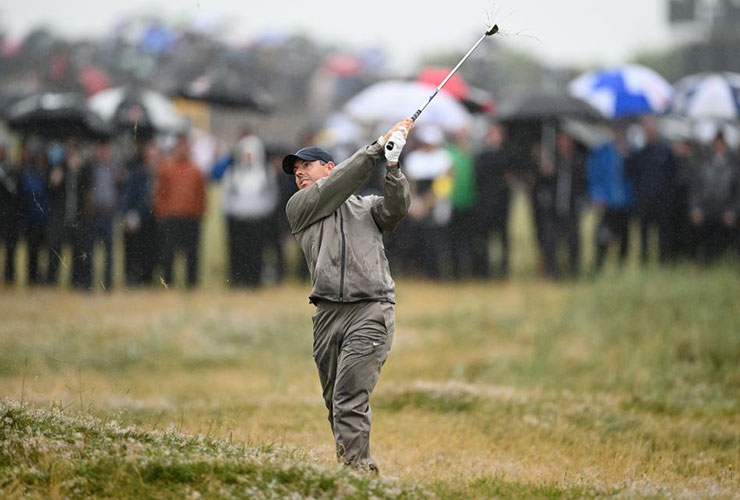Keyur Khamar
Whether you like it or not, you’re going to encounter windy golf rounds in the future, but it doesn’t have to completely tank your score. Navigating this tricky element is easier than you’d think if you know how to adjust your game for the conditions.
Here, we explore the various “tricks of the trade” that we’ve learnt watching the pros and playing first-hand in some of the windiest conditions golf has to offer.
Here are the three keys you need to play better in the wind.
1. They swing too hard (and don’t take enough club)
You’ve probably heard the phrase “swing easy when it’s breezy,” but it’s more than just a catchy phrase. Swinging easy is one of the simplest and most effective ways to reduce the amount of backspin you put on the golf ball.
Before we get into the fix, let’s break down what backspin is for those who may not know.
When your club strikes the back of the ball, it creates pressure and forces air under the ball that makes it spin backwards. This ‘backspin’ is what gets the ball up and keep the ball in the air.
In most cases, we want backspin, however, in windy conditions it’s less than ideal especially if you have wind in your face. When the wind is blowing directly at you, it exaggerates the effect of backspin, causing the ball to balloon or rise quickly and stay high, as well as taking a significant amount of distance off your shots.
The best way to combat this is to grab a little extra club and swing at 75 per cent, or even less. My colleague Luke Kerr-Dineen even suggests taking half swings, hitting low knock down shots or even long chip shots with extra club if the wind is really howling.
“These links courses will run out most of the time,” Kerr-Dineen says, “it’s really the only way you can get around these courses.”
Not only is this the best play to counteract some of the effects of high wind, but these low punch shots are a great way to warm up on the range — and the pros agree.
Tommy Fleetwood and other tour pros alike often use this in their range routine to groove solid contact. To try it out on your own, take your normal golf set-up with a long iron, choke down and take half swings. It’s a great opportunity to practise these utility shots and focus on creating consistent, centrer-face contact.
2. They don’t realise how much wind affects your ball

Rory McIlroy. Richard Heathcote/R&A
So many golfers think they’re immune to the effects of rough weather conditions. They think they should be able to withstand them and play their normal game, but that’s usually not the case when you’re facing 20 mph winds or buckets of rain.
The faster you can check your ego at the door and understand that your ball may not be flying as far, or that you may need to hit a 3-wood on a par-3, the better you’ll score during your round.
“To put things in perspective, on the final day at The Open Championship, Rory McIlroy hit a drive on the first hole 250 yards,” Kerr-Dineen says, “He hit it good too! The previous day he hit it 320 yards on the same hole with the same club.”
This 70-yard difference is a great example of just how much bad weather can impact your shots. It’s not uncommon for someone who hits it 250 yards to hit it 200 yards if the wind is up and there’s rain, but the key is processing that information and figuring out how to make it work for you.
3. They don’t re-adjust their expectations
It’s important to manage your expectations when playing in tough conditions because you’re not always going to have an easy shot in, the best lie, or lucky bounces. In severe weather conditions, more often than not, golfers actually end up with more unlucky breaks, but if you can manage your expectations that won’t shake you out on the course.
Where golfers get into trouble is when they assume they should be pulling off shots they see the pros hit or shots they’ve pulled off once before in different conditions. Not only is this unfair to you, it’s also going to take a toll on your mental game and will cause you to dwell on the negatives instead of celebrating the wins when you can.
Sometimes, when playing in harsh weather conditions, getting your ball up by the green is a win. Players that can recognise that and focus on the positives will have a better time on the course and might even make a few additional up and downs to save par because they’re not bogged down by the negative thoughts or experiencing mental fatigue from being too tough on themselves.









